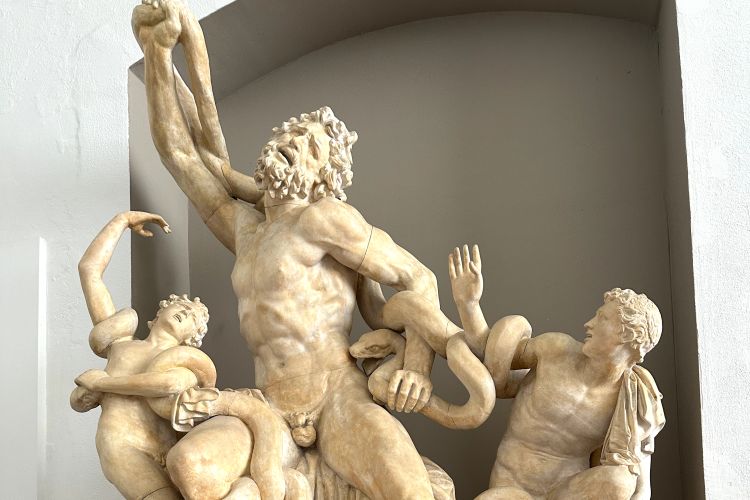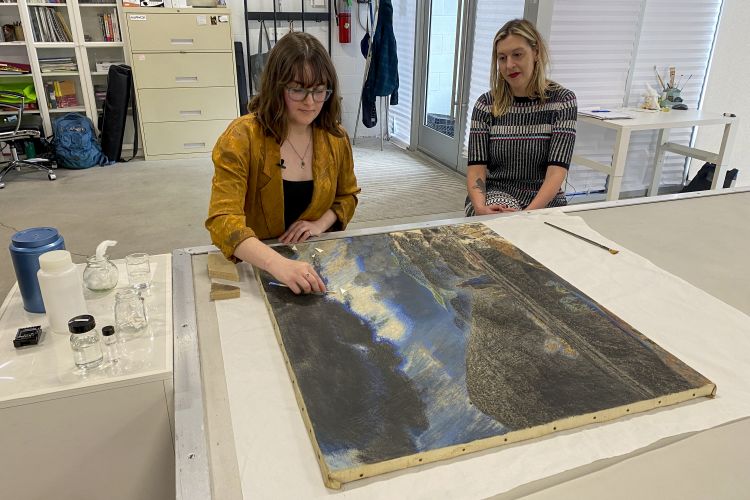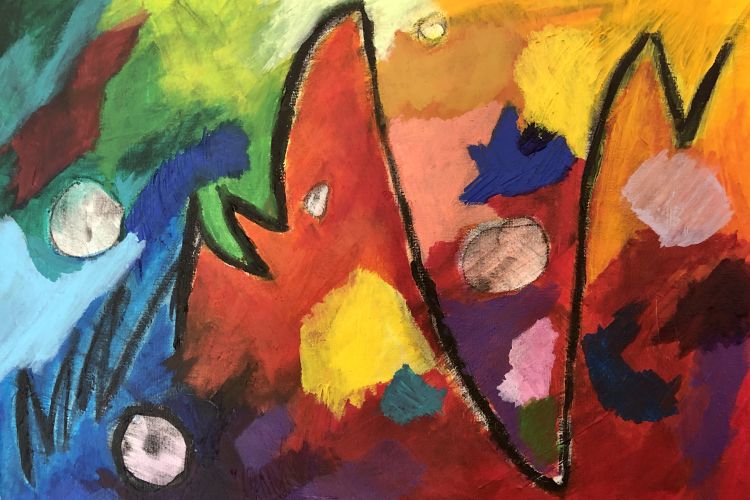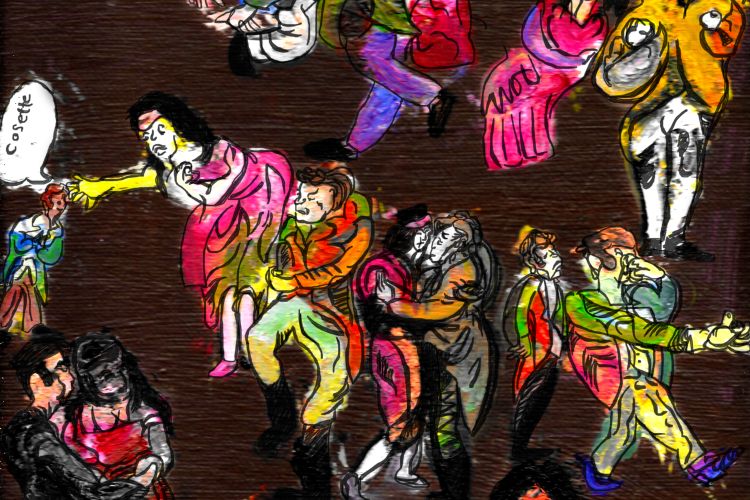STORIES FROM PAFA
From Art Studio to Archaeological Dig
Leslie Pickel (BFA ‘21) is a painter but lately her biggest influence is coming from the sculpture studio.
“Working three-dimensionally enhances my painting in the sense that I can kind of feel the flesh and get more character,” said the second-year PAFA student. “I have a tendency when I paint, I like to work thick and opaque with the paint and sort of model it and sculpt it in a way as well.”
In her Écorché sculpture class, Pickel and her classmates sculpt life-size heads and study the function of muscles in facial expressions. Every student’s head looks different because there isn’t a live model in the class.
“We started by making a basic skull and then from the skull we added different components,” she said. “Layer by layer, it is kind of an in-depth exploration. While it’s solidly founded in tradition and we’re using these medical pamphlets, there’s still flexibility to use your own style.”
The ability to go between sculpture and painting is part of the reason Pickel came to PAFA on the recommendation of her art teachers at the Delaware Art Museum.
“I was really interested in studying at a place where there’s a lot of prestige,” she said. “And a place that has a solid foundation in traditional work but then also gives you flexibility and encourages you to find your individual style.”
This past summer, Pickel stepped outside of the studio and travelled to Italy to further study traditional sculpture. PAFA art history professor Dr. Jane Yantz recommended she join an archaeological dig in Tuscany with Dr. Greg Warden of Franklin University in Switzerland.
She was surprised she didn’t need an extensive archaeological education but jumped at the opportunity.
“I went to work on an Etruscan archaeological dig in Italy so I was looking at a lot of Etruscan bronze figures,” she said. “They have a lot of texture and you can really feel the hand of the artist that created them in these pieces. That's kind of my current inspiration, things that are older and sort of more natural.”
For three weeks, Pickel and her fellow diggers worked at site on the top of a mountain from 6am to 3pm.
The workday was long but eventually paid off.
“We as a team found an Etruscan wall about 5 feet in the ground,” Pickel said. “There’s no guarantee you’re going to find anything.”
Back in the US, Pickel is still processing the experience and how it can be incorporated into her art practice. She hopes to use the upcoming winter break to go through the photos she took in Italy and either make paintings from the photos or digitally enhance the images and overlay her paintings with them.
“The whole trip, I think it really broadened my horizons in regard to how much is out there and how interconnected the world,” she said. “It’s so easy to think you’re going to school, you work in one area and stay in that, but there is so much more.”





